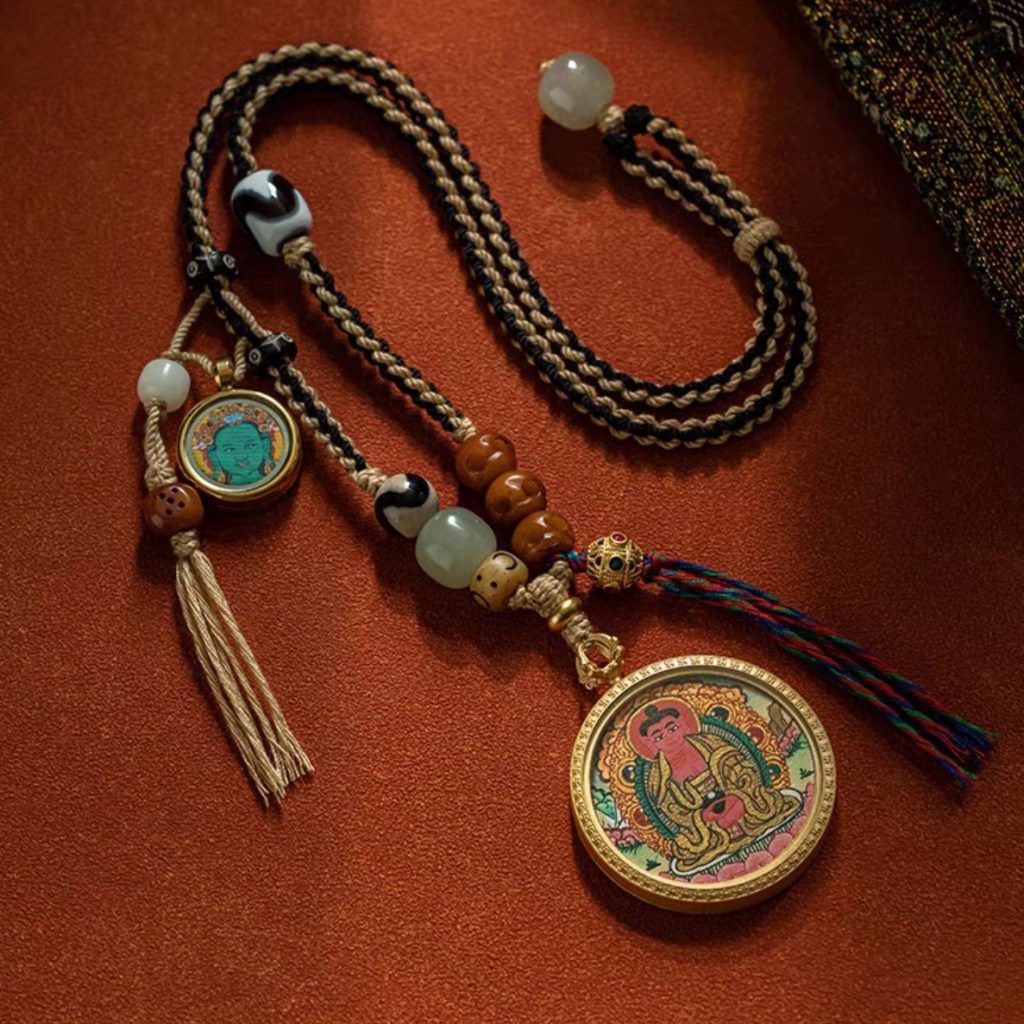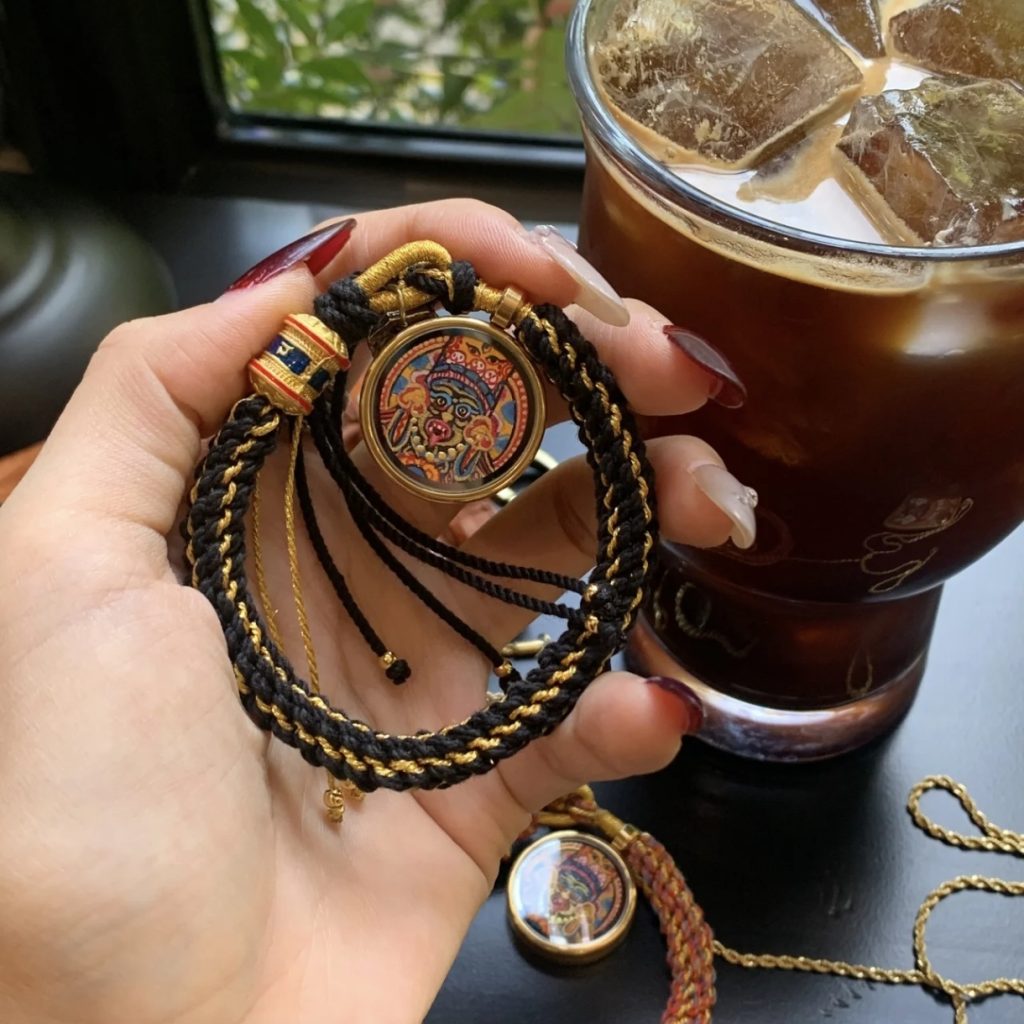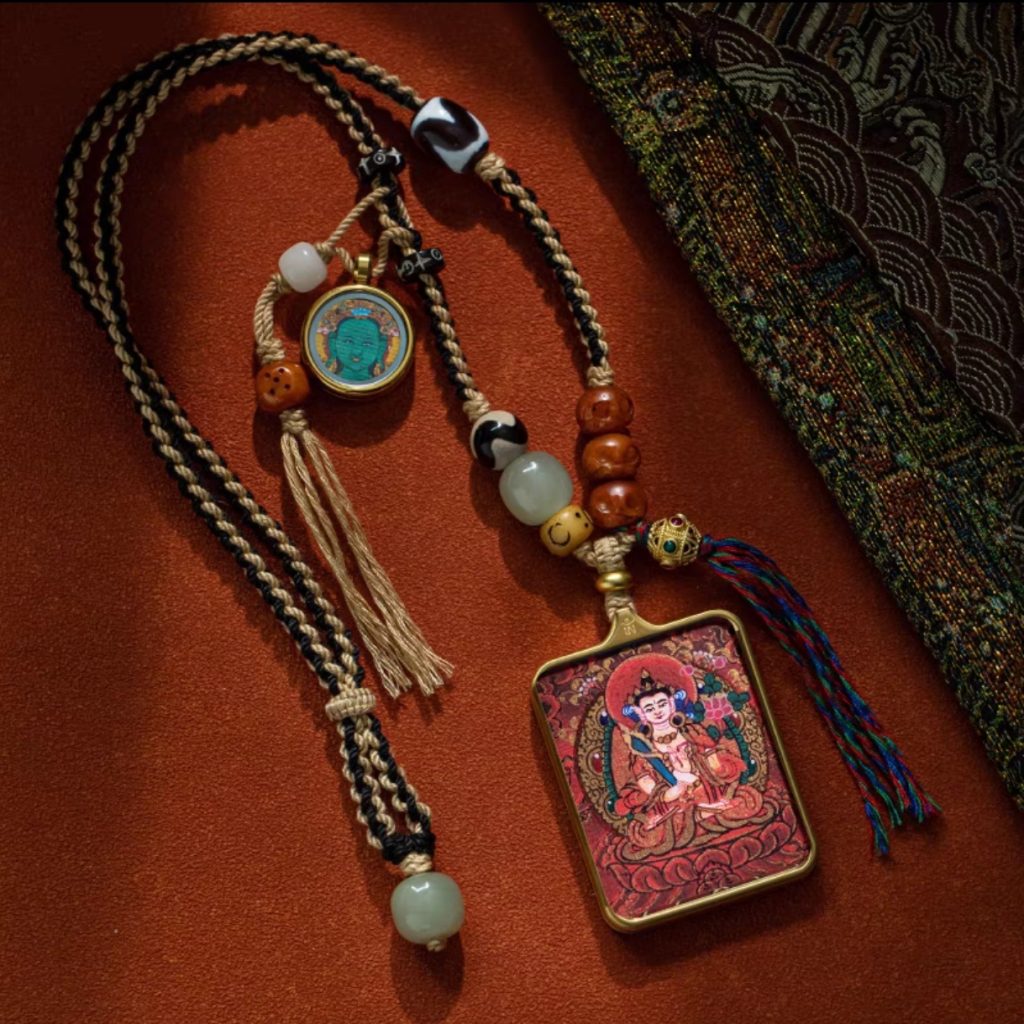How Are Thangka Painting Made is a question that opens the door to understanding an exquisite form of Tibetan Buddhist art. Thangka paintings (also spelled thangkha, thangga, or tangka) are sacred scroll paintings, typically created on cotton or silk, depicting deities, mandalas, religious stories, and elements of Tibetan culture. Their production follows an elaborate, multi-step process that combines artistry with spiritual practice.
Step 1: Choosing the Canvas and Stretching the Frame
The canvas for a Thangka should be a light-toned, moderately thick, tightly woven fabric. Ideal choices include pure white cotton or silk without any patterns. White silk is especially prized for its smooth texture. The canvas is carefully stretched over a wooden frame to provide a firm, flat surface suitable for painting.
Step 2: Preparing the Base Layer
First, a layer of diluted glue is evenly applied to the canvas to prevent the pigments from soaking into the fibers, thereby keeping the paint on the surface. Once dry, a second layer of limewater mixed with adhesive is applied. After this dries, the canvas is polished flat on a table or wooden board using a smooth round stone or shell. This polishing continues until the surface is flawlessly smooth, with no visible fabric texture.
Step 3: Drafting the Composition
Artists use fine charcoal pencils to draw positioning lines, such as edge lines, vertical centerlines, and diagonals, according to strict compositional rules. These guidelines are critical, especially for depicting deities and religious figures with precise postures and proportions. On this framework, senior artists sketch the overall layout, including figures, clouds, landscapes, architecture, birds, animals, flowers, and trees, ensuring complexity is balanced with clarity.
Step 4: Line Drawing
Building upon the charcoal sketch, final outlines are made using fine brushes and ink. As pigments cover some lines, repeated re-outlining is done to maintain clarity. This step uses varied brushstrokes and colors according to the composition’s needs, elevating the artistic quality significantly.
Step 5: Coloring
Coloring is applied following a light-to-dark sequence to optimize visual harmony and material use. It starts with the sky, painted in gradient from light at the bottom to dark at the top. The ground is usually green. Then, clouds, mist at the deity’s head and feet, and the halo behind the figure are colored. Dark garments and shadows follow, finishing with the face, flesh tones, and remaining lighter areas. This intricate process reflects years of experience and craftsmanship.
Step 6: Rendering
Rendering uses thin, transparent layers of color over the base to enhance volume and depth. For example, clouds start with white and are layered with soft blues or pale greens following smooth structural lines, creating rich, three-dimensional effects.
Step 7: Re-Outlining
Lines blurred or obscured by coloring are precisely retraced to restore their original sharpness.
Step 8: Applying Gold Detailing
Gold powder mixed with adhesive is applied for delicate lines and small areas, including the deity’s crown, jewelry, clothing patterns, halos, ritual implements, and offerings. This gilding adds brilliance and spiritual significance.
Step 9: Embellishment
Using a hard-tipped brush made from amber, artists polish or emboss areas covered with gold or silver, creating textures or patterns for enhanced visual richness.
Step 10: Painting the Face (Opening the Face)
The portrayal of the deity’s facial features demands supreme skill and reveals the artist’s mastery. This step breathes life into the painting and reflects spiritual presence.
Step 11: Applying Protective Finish
The painting is coated with varnishes or lacquers tailored to the material’s needs, preserving colors and protecting from damage.
Step 12: Chanting and Consecration
Finally, the Thangka is blessed through chanting and spiritual rituals, imbuing it with sacred power and elevating it beyond mere artwork.
The Cultural Significance and Artistic Elements of Thangka Paintings
Thangkas are considered the “encyclopedia of Tibetan culture,” portraying religious, historical, political, and cultural themes. Their subjects include religious mandalas, life stories of Buddha, protective deities, cosmological diagrams, and secular themes such as Tibetan medicine and astronomy.
The colors are made from precious mineral and plant pigments—gold, silver, pearls, agate, coral, turquoise, malachite, cinnabar, saffron, rhubarb, indigo—reflecting their sacred nature. Artists classify pigments into nine categories: earth, stone, water, fire, wood, grass, flower, bone, and jewel.
Thangka styles vary by region, including Nepali, Qigang, Mian Tang, Qinze, Karma Gazi, and Xinmian schools.
Key Motifs and Symbols
- Eight Auspicious Symbols (Ashtamangala): Parasol, golden fish, treasure vase, lotus, conch shell, endless knot, victory banner, and wheel of dharma.
- Five Sensory Offerings: Represented by mirror (sight), incense or conch (smell), fruit (taste), lute (sound), and silk (touch), placed on lotus or throne as offerings to deities.
- Buddha Mudras: Hand gestures symbolizing teaching, meditation, fearlessness, or subjugation of demons.
Thangka’s Artistic and Spiritual Value
Thangkas are national intangible cultural heritage artifacts. Their vivid, long-lasting colors and intricate craftsmanship attract collectors and spiritual practitioners alike. As sacred objects, they aid meditation, ritual worship, and transmit Tibetan Buddhist philosophy and history.
The artistry behind Thangkas represents millennia of cultural fusion and aspiration for a harmonious life. Today, Thangka elements inspire fashion, home décor, and spiritual products worldwide.
To explore further, visit the Encyclopedia Britannica’s authoritative article on Thangka paintings.




Leave a Reply